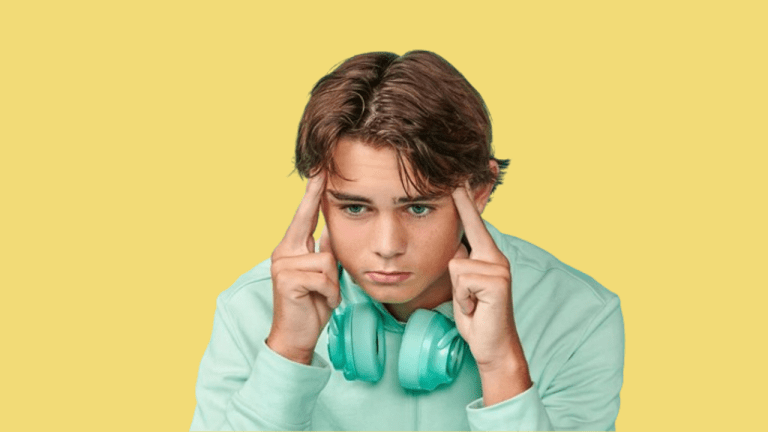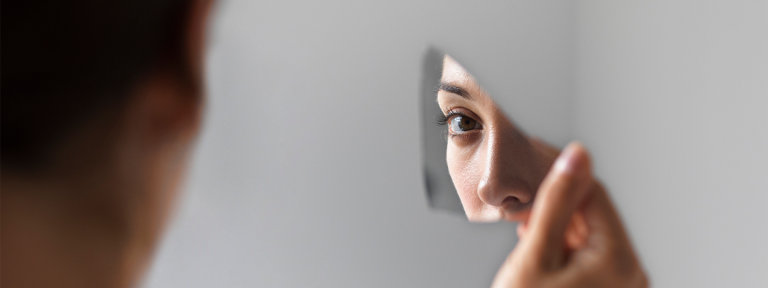Understanding Anxiety Disorder?
Living with anxiety can feel overwhelming, like a constant shadow following you around, whispering worries and fears that disrupt your daily life. If you are experiencing this, you are not alone. Anxiety disorders are among the most common mental health conditions affecting millions of people worldwide.
Understanding anxiety disorders is crucial for managing and overcoming them. By learning about the types, symptoms, and available treatments, you can take the first step toward regaining control of your life. In this blog, we’ll explore what anxiety disorders are, why it’s essential to understand them, and how you can find effective ways to reduce anxiety and stress. Whether you’re seeking immediate anxiety relief or looking for long-term strategies to manage your symptoms, this guide is here to help.
Understanding Types of Anxiety Disorders
Living with anxiety can be a daily struggle, but understanding the specific type of anxiety disorder you or a loved one is experiencing is a crucial step toward managing it. Each type of anxiety disorder has its own set of characteristics and symptoms, and recognizing these can help in finding the most effective treatment and coping strategies.
Understanding Generalized Anxiety Disorder (GAD)
Generalized Anxiety Disorder (GAD) is characterized by excessive, uncontrollable worry about various aspects of daily life, such as health, work, and social interactions. This worry persists for six months or longer and is often disproportionate to the actual situation.
Symptoms of Generalized Anxiety Disorder
- Persistent worrying or anxiety about multiple areas of life
- Restlessness or feeling on edge
- Fatigue and difficulty concentrating
- Muscle tension and sleep disturbances
Living with GAD can feel like you’re constantly bracing for disaster, even when there’s no immediate threat. Understanding that these symptoms are part of GAD can be the first step toward finding relief.
Understanding Panic Disorder
Panic Disorder involves recurrent, unexpected panic attacks—sudden periods of intense fear that can include palpitations, sweating, and feelings of impending doom. These attacks can occur without warning and without a specific trigger.
Panic Disorder Symptoms
- Rapid heart rate and chest pain
- Shortness of breath and dizziness
- Fear of losing control or going crazy
- Tingling or numbness in the hands and feet
While panic attacks are a hallmark of Panic Disorder, they can also occur in other anxiety disorders. The key difference is the unexpected nature and frequency of attacks in Panic Disorder.
Understanding Social Anxiety Disorder
Social Anxiety Disorder, also known as social phobia, involves an intense fear of social situations where one might be judged, embarrassed, or humiliated. This fear can interfere significantly with daily activities.
Social Anxiety Symptoms
- Intense fear of interacting with strangers
- Fear of being judged negatively
- Avoidance of social situations
- Physical symptoms such as blushing, sweating, and trembling
Treatment often includes cognitive-behavioral therapy (CBT), which helps individuals challenge and change negative thought patterns, and sometimes medication to reduce symptoms.
Understanding Separation Anxiety Disorder
Separation Anxiety Disorder is characterized by excessive fear or anxiety about being separated from attachment figures, such as parents or caregivers. While often associated with children, it can also affect adults.
Separation Anxiety Disorder Symptoms
- Excessive distress when anticipating or experiencing separation
- Worry about losing attachment figures or them being harmed
- Reluctance or refusal to go out due to fear of separation
- Physical symptoms such as headaches or stomachaches during separation
Understanding that these symptoms are not just “clinginess” but part of a recognized disorder can help in seeking appropriate support and treatment.
Understanding Other Types of Anxiety Disorders
- Specific Phobias: Intense, irrational fear of specific objects or situations (e.g., heights, animals, flying).
- Agoraphobia: Fear of situations where escape might be difficult, often leading to avoidance of open spaces or crowded places.
- Obsessive-Compulsive Disorder (OCD): Characterized by intrusive, unwanted thoughts (obsessions) and repetitive behaviors (compulsions).
Each type of anxiety disorder has its own unique features, but they all share the common element of excessive fear or anxiety that disrupts daily life.
Understanding Symptoms of Anxiety Disorders
Living with anxiety can be incredibly challenging, and recognizing the symptoms is the first step toward finding relief. Understanding the common and specific symptoms of anxiety disorders can help you identify what you or a loved one might be experiencing and seek appropriate treatment.
Common Symptoms
Anxiety disorders often share several common symptoms, which can manifest both physically and emotionally. These symptoms can vary in intensity and frequency but can significantly impact daily life.
Physical Symptoms
- Stomach Cramps: Anxiety can cause gastrointestinal issues, leading to stomach cramps and discomfort. These physical symptoms are often overlooked but can be a clear indicator of anxiety.
- Sleep Issues: Difficulty falling asleep, staying asleep, or experiencing restless sleep are common among those with anxiety. Insomnia can exacerbate anxiety, creating a cycle that’s hard to break.
- Other Physical Symptoms: Muscle tension, headaches, rapid heart rate, and excessive sweating are also common physical manifestations of anxiety.
Understanding Emotional and Psychological Symptoms
- Persistent Worry: An overwhelming sense of worry or fear that doesn’t seem to go away, even when there is no immediate threat.
- Restlessness: Feeling on edge or unable to relax, which can make it difficult to focus on tasks.
- Irritability: Anxiety can often lead to increased irritability and frustration, affecting relationships and daily interactions.
These common symptoms can significantly impact quality of life, making it crucial to understand and address them.
Symptoms of Specific Anxiety Disorders
While there are common symptoms shared among different anxiety disorders, each type of anxiety disorder has its own unique set of symptoms. Recognizing these differences can help in accurately diagnosing and treating the disorder.
Symptoms of Generalized Anxiety Disorder (GAD)
- Excessive Worry: Persistent and excessive worry about various aspects of life, such as health, work, or social interactions.
- Physical Symptoms: Muscle tension, fatigue, difficulty concentrating, and sleep disturbances are common in GAD.
Social Anxiety Symptoms
- Fear of Social Situations: Intense fear of being judged or embarrassed in social settings, leading to avoidance of such situations.
- Physical Symptoms: Blushing, sweating, trembling, and nausea can occur during or in anticipation of social interactions.
Panic Disorder Symptoms
- Panic Attacks: Sudden episodes of intense fear, often accompanied by physical symptoms such as chest pain, heart palpitations, shortness of breath, and dizziness.
- Fear of Future Attacks: The fear of experiencing another panic attack can lead to avoidance of places or situations where attacks have occurred.
Understanding Causes of Anxiety Disorders
Understanding the root causes of anxiety disorders is crucial in managing and treating them effectively. Anxiety can arise from a combination of biological, environmental, and genetic factors, each playing a significant role in how anxiety disorders develop and manifest.
Biological Factors
Anxiety disorders are often linked to various biological factors, including imbalances in brain chemistry and the body’s stress response system.
Hormones and Anxiety
Hormonal imbalances can significantly impact anxiety levels. For example, fluctuations in hormones such as estrogen and progesterone can contribute to anxiety symptoms, particularly in women during menstrual cycles, pregnancy, and menopause.
Cortisol and Stress
- Cortisol, often referred to as the “stress hormone,” plays a critical role in the body’s response to stress. Elevated cortisol levels over prolonged periods can lead to increased anxiety and other health issues.
- Understanding how to manage cortisol levels through stress reduction techniques is essential for alleviating anxiety.
Adrenaline and Anxiety
- Adrenaline, another hormone released during the body’s fight-or-flight response, can cause physical symptoms of anxiety such as increased heart rate, sweating, and trembling.
- Learning to manage adrenaline surges through relaxation techniques can help reduce these symptoms.
Biological factors provide a foundation for understanding why anxiety occurs, helping to inform more targeted treatment approaches.
Environmental Factors
Our surroundings and experiences can significantly influence the development of anxiety disorders. Environmental factors often trigger or exacerbate anxiety symptoms.
Stressful Life Events
Major life changes such as moving, changing jobs, or the loss of a loved one can trigger anxiety disorders. These events can disrupt normal routines and create uncertainty, leading to heightened anxiety.
Ongoing Stressors and Their Impact
- Chronic stressors, such as financial difficulties, relationship problems, or a high-pressure work environment, can contribute to the development of anxiety disorders. The constant strain on mental and emotional resources can lead to persistent anxiety.
- Learning stress management techniques is vital for mitigating the impact of these ongoing stressors.
Genetic Factors
Anxiety disorders can also be inherited, with genetic factors playing a significant role in their development.
Family History and Genetic Predisposition
- A family history of anxiety or other mental health disorders can increase the likelihood of developing anxiety disorders. Genetic predisposition means that some people are more vulnerable to anxiety due to their genetic makeup.
- While genetics can predispose someone to anxiety, it’s important to remember that it doesn’t guarantee the development of an anxiety disorder. Environmental and lifestyle factors also play crucial roles.
Diagnosis of Anxiety Disorders
Understanding the diagnostic process provides clarity and hope. Knowing what to expect and recognizing the role of specialists can make this journey less intimidating.
Diagnostic Process
The journey to managing anxiety starts with a thorough diagnosis, identifying the specific type of anxiety disorder for targeted treatment.
What to Expect During an Anxiety Disorder Diagnosis
- Initial Consultation: The process begins with a visit to your primary care doctor or a mental health professional. They will ask about your symptoms, medical history, and contributing factors.
- Comprehensive Assessment: This includes a detailed interview, questionnaires, and possibly physical exams to rule out other conditions. Be prepared to discuss your symptoms in detail, including their onset, severity, and impact on daily life.
- Criteria for Diagnosis: Professionals use criteria from the DSM-5 to diagnose anxiety disorders, looking for specific patterns and severity of symptoms.
Understanding the diagnostic process can reduce fear and uncertainty, providing direction and purpose.
Role of Anxiety Disorder Specialists
- Psychiatrists: Medical doctors who diagnose anxiety disorders, prescribe medications, and provide therapy.
- Psychologists: Trained to diagnose and treat mental health conditions through therapy but typically do not prescribe medications.
- Counselors and Therapists: Provide support and therapy to help manage symptoms and develop coping strategies.
- Other Specialists: Neurologists or endocrinologists may be involved if there are complicating medical factors.
Working with a specialist can make a significant difference in managing anxiety. These professionals provide treatments and support, ensuring you receive the best possible care.
Treatment Options for Anxiety Disorders
Finding the right treatment for anxiety disorders can be life changing. There are various effective options available, each tailored to address different aspects of anxiety. Understanding these treatments can help you or a loved one make informed decisions on the path to recovery.
Therapies
Therapy is a cornerstone of anxiety disorder treatment, offering strategies to manage symptoms and improve quality of life.
Cognitive-Behavioral Therapy (CBT)
CBT is a widely used therapy that focuses on identifying and changing negative thought patterns and behaviors. It helps individuals develop coping skills to manage anxiety more effectively.
- Benefits: CBT is effective for various anxiety disorders, providing long-term benefits by addressing the root causes of anxiety.
Social Anxiety Therapy
Social anxiety therapy specifically targets fears and anxieties related to social interactions. Techniques include exposure therapy, where individuals gradually face social situations in a controlled way.
- Benefits: This therapy helps individuals build confidence and reduce avoidance behaviors, improving their ability to interact socially.
Medications
Medications can be an important part of the treatment plan for anxiety disorders, helping to manage symptoms and improve daily functioning.
Types of Medications for Anxiety Disorders
- Antidepressants: Often used to treat anxiety, these medications can help regulate mood and reduce anxiety symptoms.
- Benzodiazepines: These are fast-acting medications that provide immediate relief but are typically prescribed for short-term use due to the risk of dependence.
- Beta-Blockers: Used to manage physical symptoms of anxiety, such as rapid heart rate and trembling.
Anxiety Medication Side Effects
- Common Side Effects: These can include drowsiness, dizziness, dry mouth, and weight gain. It’s important to discuss potential side effects with a healthcare provider to manage them effectively.
- Long-term Considerations: Monitoring and regular consultations with a healthcare provider ensure that medications remain effective and that side effects are minimized.
Support Groups
Support groups play a vital role in the treatment of anxiety disorders, offering a sense of community and shared experience.
Role and Benefits of Anxiety Support Groups
- Community Support: Joining a support group provides a safe space to share experiences, gain insights, and receive encouragement from others facing similar challenges.
- Emotional Relief: Knowing you are not alone in your struggles can significantly reduce feelings of isolation and provide emotional comfort.
- Resource Sharing: Support groups often share practical advice, coping strategies, and information about treatments that have worked for others.
Immediate and Natural Anxiety Relief Techniques
When anxiety strikes, finding immediate relief is crucial. Here are some effective and natural methods to quickly calm your mind and body, helping you regain control.
Immediate Anxiety Relief
In moments of intense anxiety, quick and effective strategies can make a significant difference.
Quick Ways to Reduce Anxiety
- Deep Breathing: Slow, deep breaths can quickly reduce anxiety by calming the nervous system. Inhale deeply through your nose, hold for a few seconds, and exhale slowly through your mouth.
- Grounding Techniques: Engage your senses to bring your focus back to the present moment. This can involve noticing the colors around you, feeling the texture of an object, or listening to nearby sounds.
Ways to Reduce Anxiety Quickly
- Progressive Muscle Relaxation: Tense and then slowly relax each muscle group in your body, starting from your toes and working up to your head. This technique helps release physical tension.
- Visualization: Close your eyes and imagine a peaceful scene, such as a beach or a forest. Focus on the details and immerse yourself in the vision of a calming environment.
Natural Ways to Reduce Anxiety
Incorporating natural methods into your routine can help manage anxiety without relying on medications.
Deep Breathing for Anxiety
- Practice Regularly: Set aside time each day to practice deep breathing exercises. This helps make deep breathing a natural response to anxiety.
Physical Activity and Its Benefits
- Exercise Regularly: Physical activity releases endorphins, which are natural mood lifters. Activities like walking, jogging, or yoga can significantly reduce anxiety levels.
Does Chewing Gum Help Anxiety?
- Distraction and Focus: Chewing gum can help distract you and provide a physical outlet for nervous energy, potentially reducing anxiety.
Best Ways to Reduce Anxiety
Adopting a comprehensive approach can provide lasting relief from anxiety.
Comprehensive Techniques and Practices
- Mindfulness Meditation: Practice mindfulness to stay grounded in the present moment. This can reduce the impact of anxious thoughts and improve overall mental health.
- Healthy Lifestyle Choices: Ensure adequate sleep, maintain a balanced diet, and stay hydrated. These factors significantly influence anxiety levels.
Long-Term Anxiety Management Strategies
Developing long-term strategies is essential for managing anxiety effectively over time. These techniques help build resilience and improve overall well-being.
Coping Techniques for Anxiety
Effective coping strategies can help you manage anxiety symptoms and reduce their impact on your daily life.
Relaxation Techniques for Anxiety
- Progressive Muscle Relaxation: Regular practice can help you recognize and release tension before it builds up.
- Meditation and Mindfulness: Incorporate these practices into your routine to promote calmness and clarity.
Stress Management Tips
- Time Management: Plan and prioritize tasks to avoid feeling overwhelmed. Break tasks into manageable steps.
- Healthy Boundaries: Learn to say no and set limits to protect your mental health.
How to Deal with Anxiety and Stress
Practical advice and lifestyle changes can significantly impact your ability to manage anxiety and stress.
Practical Advice and Lifestyle Changes
- Healthy Habits: Incorporate regular exercise, a balanced diet, and adequate sleep into your lifestyle.
- Support Network: Surround yourself with supportive friends and family who can provide encouragement and understanding.
By incorporating these methods into your daily routine, you can find effective ways to reduce anxiety and improve your overall quality of life. Remember, it’s essential to seek professional help if your anxiety becomes overwhelming or interferes with your daily activities. You’re not alone, and support is available to help you navigate through these challenges.
Conclusion
Understanding and managing anxiety involves recognizing the different types, symptoms, and effective treatments available. Seeking professional help is a courageous and necessary step towards recovery. Healthcare providers, therapists, and support groups offer invaluable assistance and guidance.
At PsychPlus, we offer same or next day appointments, accept most insurances, and provide both tele-visit and in-office appointments to suit your needs. Reach out today to start your journey towards a calmer, healthier life.





